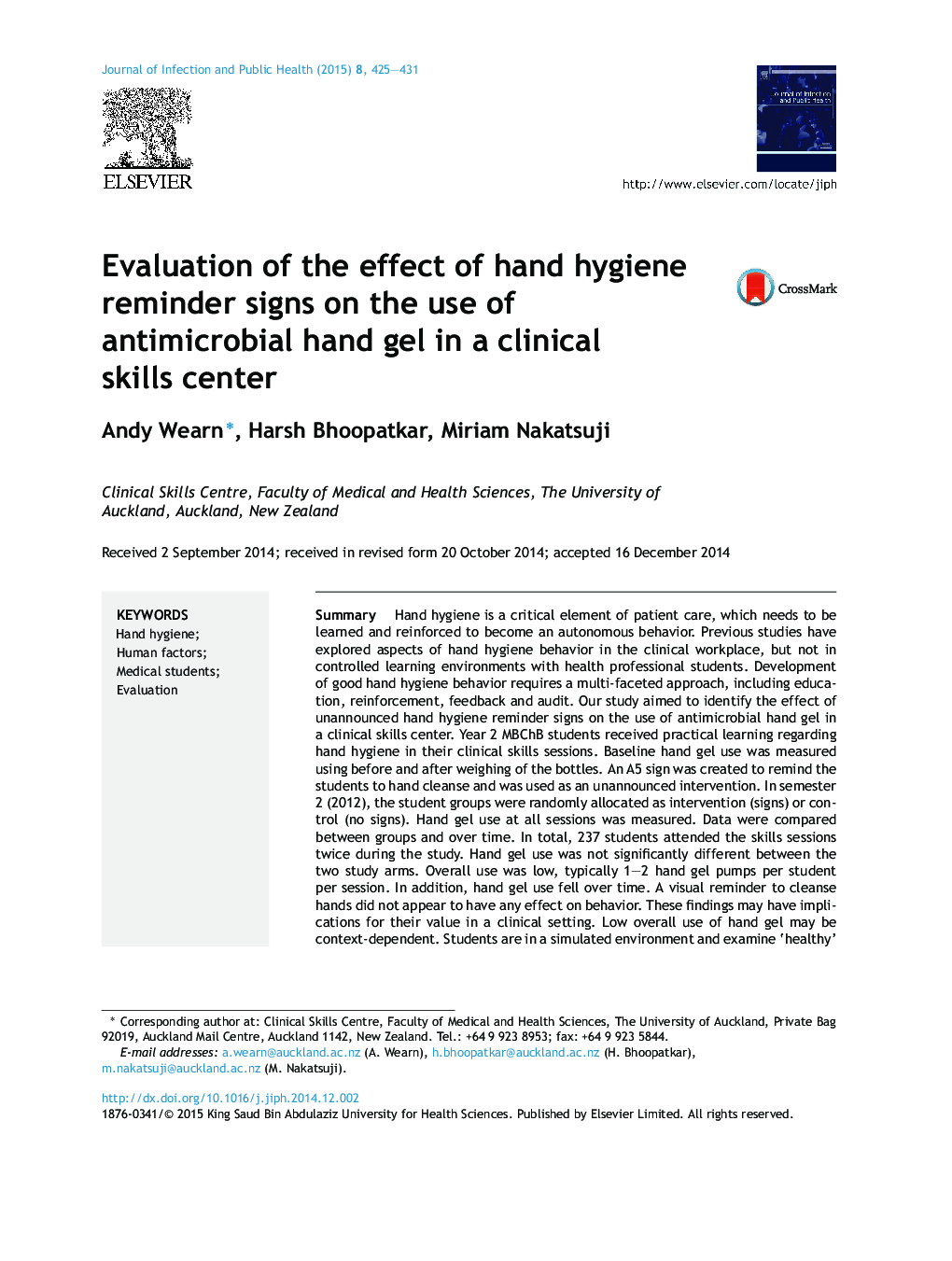| کد مقاله | کد نشریه | سال انتشار | مقاله انگلیسی | نسخه تمام متن |
|---|---|---|---|---|
| 3405850 | 1223486 | 2015 | 7 صفحه PDF | دانلود رایگان |
SummaryHand hygiene is a critical element of patient care, which needs to be learned and reinforced to become an autonomous behavior. Previous studies have explored aspects of hand hygiene behavior in the clinical workplace, but not in controlled learning environments with health professional students. Development of good hand hygiene behavior requires a multi-faceted approach, including education, reinforcement, feedback and audit. Our study aimed to identify the effect of unannounced hand hygiene reminder signs on the use of antimicrobial hand gel in a clinical skills center. Year 2 MBChB students received practical learning regarding hand hygiene in their clinical skills sessions. Baseline hand gel use was measured using before and after weighing of the bottles. An A5 sign was created to remind the students to hand cleanse and was used as an unannounced intervention. In semester 2 (2012), the student groups were randomly allocated as intervention (signs) or control (no signs). Hand gel use at all sessions was measured. Data were compared between groups and over time. In total, 237 students attended the skills sessions twice during the study. Hand gel use was not significantly different between the two study arms. Overall use was low, typically 1–2 hand gel pumps per student per session. In addition, hand gel use fell over time. A visual reminder to cleanse hands did not appear to have any effect on behavior. These findings may have implications for their value in a clinical setting. Low overall use of hand gel may be context-dependent. Students are in a simulated environment and examine ‘healthy’ peers or actors. There may have been inconsistent tutor role-modeling or problems with the educational approach to the skill. Analysis at the level of the group, and not the individual, may have also limited our study.
Journal: Journal of Infection and Public Health - Volume 8, Issue 5, September–October 2015, Pages 425–431
